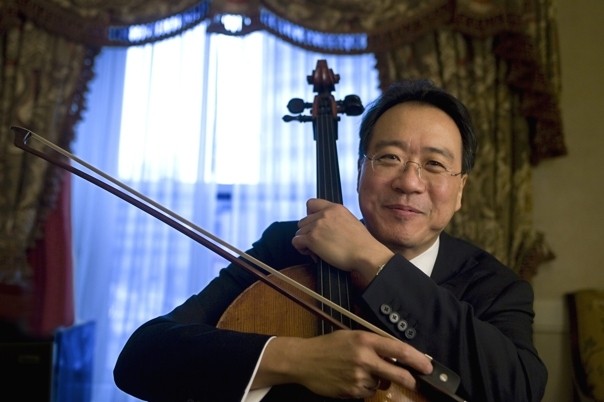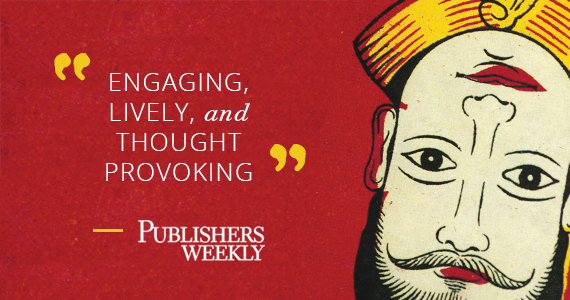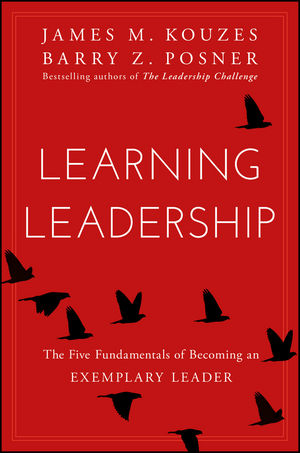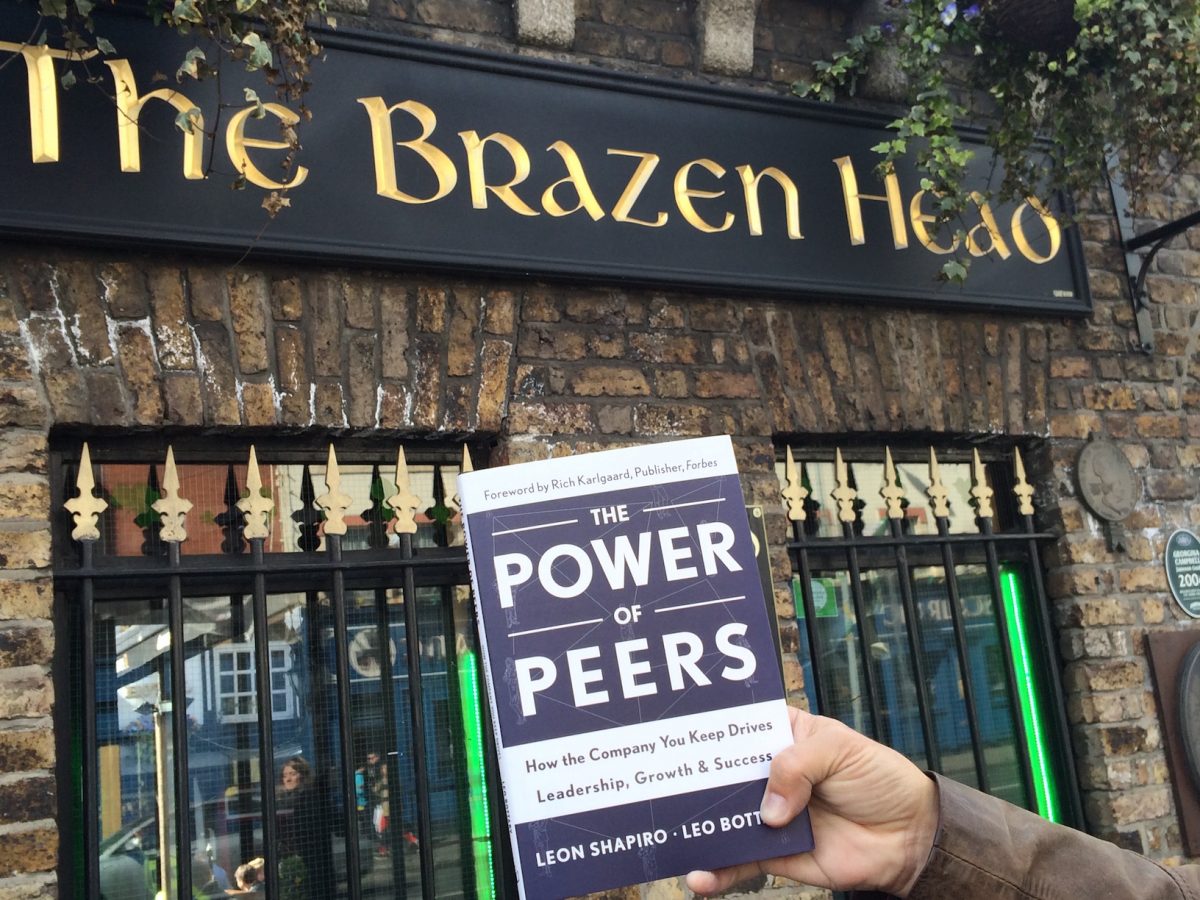In a recent interview with HBR, Yo-Yo Ma talks about successful collaboration and the power of peers. I’m not suggesting he referenced our book per se, but during the first seven minutes or so of the 18-minute interview, he touched on the concepts from our book that relate to working successfully with peers and how much our peers can challenge us to grow and see the world in different ways – to understand how two truths can co-exist if we are open to learning. I encourage you to listen to the entire interview. Pay close attention as he talks about keeping your ego in check, being vulnerable, learning rather than judging, valuing generosity and mutual respect, and understanding why surrounding yourself with the right people is so important. It’s music to my ears. Enjoy!
Month: May 2016
Publishers Weekly and The Power of Peers
I’m a big admirer of Howard Gardner, who among other things, codified the theory of multiple intelligences in his 1983 book Frames of Mind. I’ve always enjoyed how he answered his critics and defended his theory without being defensive. Debates with scholars inspired more conversation about his work, which I would imagine was precisely what he wanted. These are the kinds of healthy exchanges that drive engagement and promote understanding about new ideas.
In that spirit, I’d like to address a few points Publishers Weekly (PW) raised in its April review of our new book, The Power of Peers: How the Company You Keep Drives Leadership, Growth & Success (PoP).
PW – “The premise of this book is that CEOs are lonely and isolated and a peer group can help them connect, network, and accelerate their business problem-solving and decision-making. This may be true, but co-authors Shapiro, a former CEO and current board member, and Bottary, a current v-p of a business peer advisory membership organization, point to no research studies directly on point…”
PoP – This is technically correct and also one of the reasons we wrote the book. While we point to a number of studies that speak to trust, CEO isolation, and other related topics, the literature specific to peer advisory groups for business leaders is scant to say the least. We hope that’s not the case in 5-10 years. When you consider what’s available when it comes to the study of leaders and followers, it begs the question as to why there has been so little focus on the people who stand beside us in business. I’m involved in a study right now that will examine learning outcomes for CEOs who participate in peer advisory groups. We invite more people to discover the wellspring of research opportunities in this area.
PW – …and offer up examples that more often involve small business owners than CEOs of major corporations.
PoP – While most of the stories in the book come from owners and CEOs of small to mid-sized companies, we also clearly address the point that CEOs of larger companies do participate in peer groups. The implication that CEOs of larger companies would not likely receive the same value as their counterparts running smaller organizations is unfounded. CEOs of larger companies simply have different conversations, challenges and opportunities, and the dialogue that ensues during their group meetings reflects that. Based on our experience and research, that’s the only difference.
PW – “The book abounds in optimistic observations such as ‘Being vulnerable is liberating’ and ‘Our peers… hold us accountable.'”
PoP – It’s a bit of a smart-ass way to make the point, but I can appreciate the desire to add a dash of spice to the review. If anything, among the hundreds of stories we had at our disposal, we left out those that seemed just to good to be true. It’s the members who abound with optimism, we just captured their words.
PW – “It makes clear how to create such a group, but isn’t clear enough on why CEOs should want to take part.”
PoP – To address the first clause, let me say, “Excellent and thank you!” Because that’s exactly what we hoped to do. As for the second clause, we didn’t presume to tell people what their goals should be. If you want to run a marathon, surround yourself with other people who want to do (and have done) the same thing. Cheer each other on, offer training tips, and hold each other accountable for completing your training. That’s what group members do for each other. It can help you get across the finish line, whether you want to run a race or run a company (of any size). Generally speaking, people are really good at setting goals; they’re just not nearly as good at enlisting the support of people who can actually help them achieve those goals.
Summary
Thanks to Publishers Weekly for being as engaging, lively, and thought provoking as advertised. Keep raising issues and inspiring healthy dialogue and debate. It’s what happens in any peer advisory group meeting worth its salt. For those of you who’ve read The Power of Peers, I invite you to use the comments section here to ask questions and raise any concerns, doubts, etc. you may have about peer advantage or peer advisory groups for CEOs and business leaders. While you’re at it, if you’ve never read Howard Gardner, add that to your to do list! 😉
Add Your Favorite Title to the Peer Advantage Library
The Power of Peers: How the Company You Keep Drives Leadership, Growth & Success is based on the simple concepts that who you surround yourself with matters and that peers can help each other in ways they won’t find anywhere else. Turns out, if you are more selective, strategic and structured about how you engage your peers, there’s no challenge you can’t meet nor any aspiration too lofty to achieve. The proof can be found in the countless stories of people who have overcome remarkable odds and who’ve shed self-limiting beliefs to achieve amazing success for themselves and their organizations. Experiencing the power and the benefits of true peer advantage, however, can be greatly enhanced by reading other works that will help you take peer advantage in your life to new heights.
To that end, and with your help (the help of my peers), I’d like create a Peer Advantage Library that includes titles that span beyond The Power of Peers and inspires you to think about the work of some outstanding authors in the context of peer advantage. Some books focus squarely on the peer group experience, while others take a deeper dive into specific aspects of peer advantage (vulnerability and trust for example). Here are ten thought starters to get the ball rolling:
Who’s Got Your Back by Keith Ferrazzi
True North Groups by Bill George & Doug Baker
Fierce Conversations by Susan Scott
Conversational Capacity by Craig Weber
Conversational Intelligence by Judith E. Glaser
Learning Leadership by James Kouzes and Barry Posner
Team Genius by Rich Karlgaard
The Wisdom of Walk-Ons by Paul L. Corona
Daring Greatly by Brené Brown
Cultivating Communities of Practice by Etienne Wenger and Richard McDermott
These amazing books are just the tip of the iceberg. With your help, we’ll create a robust collection that will help all of us experience the power of peer advantage in all aspects of our lives. I will create a permanent home for the Peer Advantage Library over the next several weeks! Join your fellow peers by adding your favorite book(s) in the comments section! Thank you!
Emerging From The Learning Danger Zone
Every once in awhile, I find myself entering what I regard as my learning danger zone. It’s when I realize I’m writing more than I’m reading. Upon my return from a recent vacation in Europe, I decided to rectify that by diving in to Jim Kouzes’ and Barry Posner’s latest book Learning Leadership. As I expected, I’m extremely glad I did. Building on decades of research and their previous books The Leadership Challenge (now in its fifth edition) and Encouraging the Heart, among others, Kouzes and Posner suggest that leadership rests inside all of us. We are all capable of being leaders and the world needs us now more than ever. All we have to do is be willing to try and dedicated enough to bring our leadership talents forward.
The focus of this book is about learning how to learn. The best leaders are learning leaders. Their five learning leadership fundamentals include:
- Believe you can
- Aspire to excel
- Challenge yourself
- Engage support
- Practice deliberately
In a world where we’re bombarded with leadership tips and quotes, Learning Leadership challenges us to dig deeper. It starts with believing in yourself. The authors shared a Native American parable, that struck a chord with me, and I’d like to share it with you:
One evening, an old Cherokee Indian told his grandson about a battle that goes on inside people. He said, “My son, the battle is between two wolves inside us all. One is Evil. It is anger, envy, jealousy, sorrow, regret, greed, arrogance, self-pity, guilt, resentment, inferiority, lies, false pride, superiority, and ego. The other is Good. It is joy, peace. love, hope, serenity, humility, kindness, benevolence, empathy, generosity, truth, compassion, and faith.” The grandson thought about it for a minute and then asked his grandfather, “Which wolf wins?” The grandfather replied, “The one you feed.”
So if you feed the good, aspire to excel, and you’re willing to challenge yourself, then enlisting the support of others and engaging in the daily practice (the daily “doing”) of leadership is what it will take to be your best leadership self.
Best of all, the authors provide self coaching advice throughout the book that will help you successfully navigate this lifelong journey. One suggestion is keeping a daily journal. If I did that, maybe it would keep me out of slipping into my learning danger zone. I look forward to trying it. Order your copy today! You’ll be glad you did!
The Power of Peers Is Everywhere!
The 12-day European Book Tour (of sorts) started in Dublin and proceeded to Barcelona, Naples, the Amalfi Coast, Sorrento, Pompeii, Rome, Cinque Terre, Nice, Monaco, Monte Carlo, Les Baux de Provence, and Montserrat, with return trips to Barcelona and Dublin before coming back to San Diego (in progress by the way). While The Power of Peers European tour may be over, the evidence is clear that the power of peers is everywhere (and always has been).
First of all, a big thanks and hearty congratulations to the winners of the Where in the World is The Power of Peers? contest. I posted photos of the book on LinkedIn and Twitter from Dublin, Barcelona, Nice, and Monaco. A very sharp and attentive group of contestants (Jonathan Sutton, Mike Hadley, Chad Saley & Aurelia Negrerie) each guessed the location of the book within minutes, sometimes seconds, from when I uploaded the photos. It was really fun to see! You’ll all be receiving your signed books upon my return home.
Second, visiting places and exploring civilizations with thousands of years of history, leaves one breathless when you consider the innovation and boundless capacity for people to THINK BIG and DELIVER BIG. People with grand ideas, whose work was often not completed during their lifetime, created engineering and architectural marvels that have stood the test of time. Consider also, my trip to Dublin, where I saw what it takes to make and “pour” the perfect pint of Guinness (which they’ve perfecting since 1759), or my visit to The Brazen Head Pub, which is said to have been established in 1198!
Whether it was in a major city or a small village, no matter what century, people have demonstrated an infinite capacity to create and problem solve – to learn from one another, work together, and build a better life for themselves and for future generations, no matter the odds. None of these places or businesses was built by any one individual. They were created by people who learned together, grew together, achieved the implausible, and passed it along to future generations. It’s the power of peers in its full splendor! Thanks for joining me on this incredible journey!





